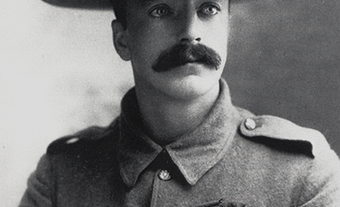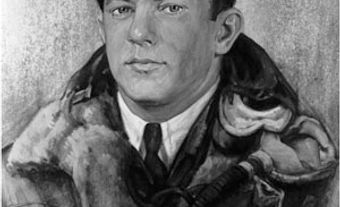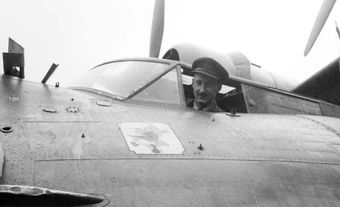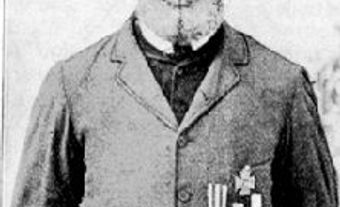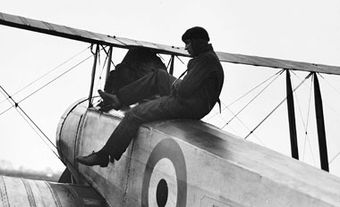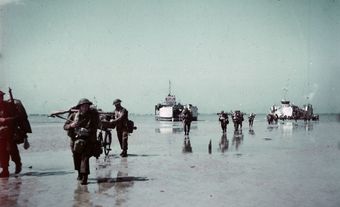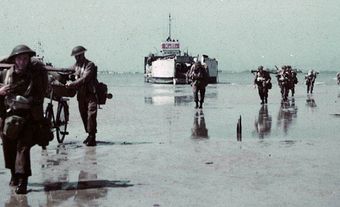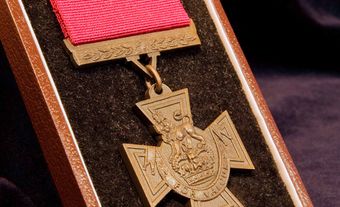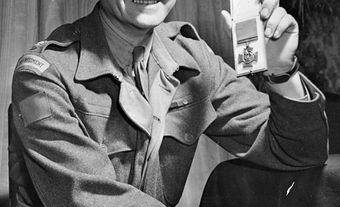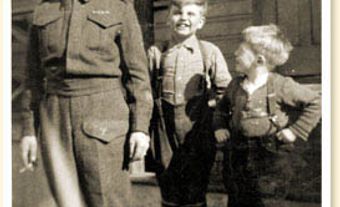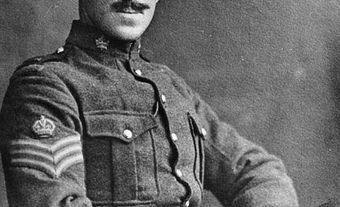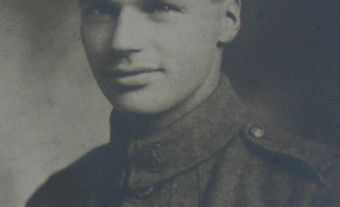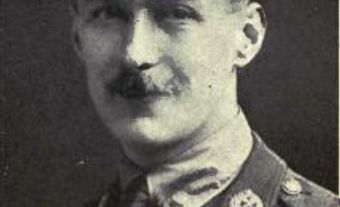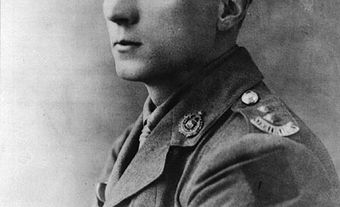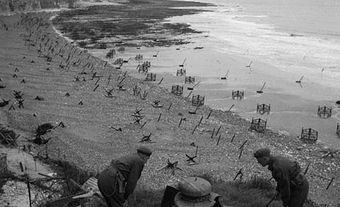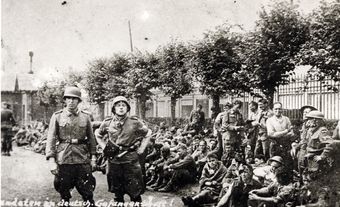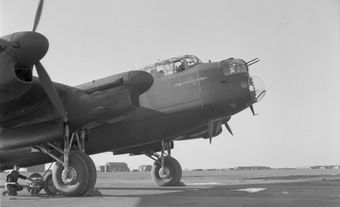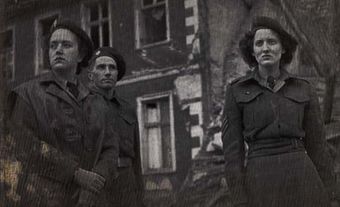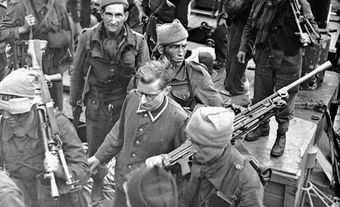Andrew Charles Mynarski, Royal Canadian Air Force pilot officer, Victoria Cross recipient (born 14 October 1916 in Winnipeg, MB; died 13 June 1944 in Cambrai, France). Mynarksi served as a gunner on bomber aircraft during the Second World War. While on a mission on 12 June 1944, his plane was attacked and on fire when, rather than jumping to safety, he ran through flames to try to rescue his fellow crewmember who was trapped in the rear gun turret. Unable to extricate his friend, Mynarski parachuted safely to the ground but later died due to severe burns. His bravery earned him many posthumous commendations, including the Victoria Cross.

Early Life
Andrew Mynarski was born to Polish immigrant parents in Winnipeg, Manitoba, on 14 October 1916. He attended King Edward School, Isaac Newton School, and St. John's Technical High School. When his father died, the 16-year-old Mynarski left school to help support his mother, two brothers and three sisters by working as a leather worker for a furrier. He later became a furrier. Mynarski was a quiet man with a good sense of humour. As a hobby, he learned woodworking and enjoyed building furniture.
Royal Canadian Air Force
The Second World War began in September 1939. In 1940, Mynarski joined the Royal Winnipeg Rifles regiment. A year later, he enlisted with the Royal Canadian Air Force (RCAF). He trained in Edmonton, Calgary and Macdonald, Manitoba, and then, beginning in January 1943, in England. Mynarski trained in gunnery on the Wellington and Halifax bombers.
He and other Canadian airmen trained at a series of English bases until they were gathered to serve together, rather than with British units. In 1944, Mynarski was posted with 419 (Moose) Squadron, 6 Group, an all-Canadian squadron at Royal Air Force (RAF) Middleton St. George. He flew his first mission over Nazi-held France in a Halifax bomber.
Air force service was exceedingly dangerous. Over 8,000 Commonwealth airmen died of non-operational flying and training accidents. While flying, crews fought extreme cold that sometimes resulted in frostbite, along with fluctuating air pressure and oxygen levels. They also dealt with the stress of knowing that at any time they could be shot down by enemy aircraft or ground artillery.
The Halifax bombers were replaced by Canadian-built Lancasters. The new and larger planes had a seven-member crew, boasted a 31m wingspan, and were 21m long. They flew in formation over enemy targets at speeds of up to 450 km/h and could carry 6,350 kg of bombs.
After Lancaster training, Mynarski flew missions to targets in Belgium, France, and Germany. The targets were marshalling yards, a military camp, radar stations and industrial areas of cities. The bombing was part of the preparation for the planned Allied amphibious landing on France’s Normandy coast (see D-Day and the Battle of Normandy). After D-Day, on 6 June 1944, Mynarski and his compatriots flew missions to targets in France. The targets were coastal batteries, bridges, crossroads and marshalling yards, to prevent or at least slow the advancement of Panzer Nazi reinforcements.
Heroic Death
On 11 June 1944, Mynarski was promoted to pilot officer. The next night, he and his crew were preparing to embark on their 13th mission when he spotted a lucky four-leaf clover in the grass near their plane. He gave it to his friend, rear gunner Pat Brophy. The Lancaster squadron roared over the English Channel toward their target, the Nazi-held rail yards at Cambrai, France. Mynarski was at his usual position as the mid-upper gunner.
Around midnight, in the sky over Cambrai, the Lancaster was coned, that is, lit up by giant searchlights on the ground, making it a target for enemy aircraft and artillery. The captain quickly banked the plane, sped upwards and escaped the lights. Descending again in preparation to release the payload, the Lancaster was attacked at 5,000 feet by one enemy twin-engine fighter aircraft coming from astern and then from below. The Lancaster’s two port engines failed. The plane caught fire and began plummeting to the earth. The captain ordered everyone to parachute to safety.
As the crew began bailing out, Mynarski noticed that Brophy was missing. He ran through flames to Brophy’s post and saw that he was unable to extricate himself from the rear gun turret due to malfunctioning hydraulics. With his clothes and parachute on fire, Mynarski repeatedly smashed a fire axe into the turret but was unable free his friend. Brophy screamed for Mynarski to save himself. Realizing the futility of his efforts, Mynarski crawled through flaming hydraulic fluid to the escape hatch. He then stood, came to attention, saluted his friend, and then jumped into the darkness.
Brophy miraculously survived when the flaming Lancaster crashed to the ground. Mynarski parachuted safely. However, he had suffered extensive burns. French farmers rushed him to a doctor but he died soon after. He was 27 years old. Mynarski was buried at Méharicourt Communal Cemetery, Méharicourt, France.
Two of the members of Mynarski’s crew were caught and imprisoned (see Canadian Prisoners of War), while the remaining four managed to return to England.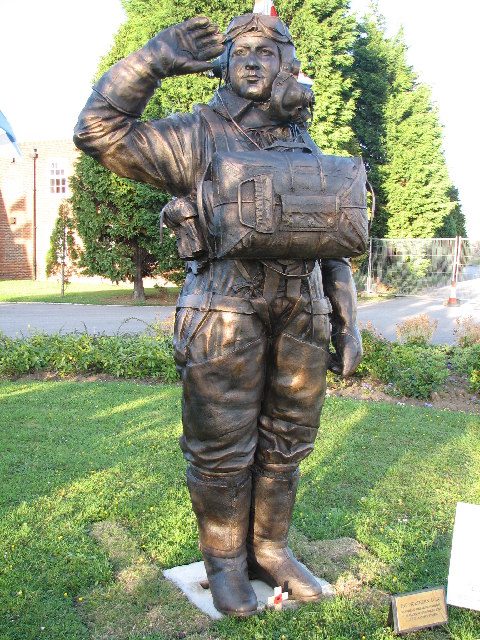
Commemoration
Mynarski was the first member of the RCAF in the Second World War to be awarded the Victoria Cross, Canada’s highest military honour. The citation reads, in part, “He lost his life by a most conspicuous act of heroism which called for valour of the highest order.”
In 1974, Mynarski was among the first veterans inducted into Canada’s Aviation Hall of Fame in Calgary. In 1988, the Canadian Warplane Heritage Museum in Mount Hope, Ontario, unveiled a restored Lancaster and, with members of his crew in attendance, dedicated it to Mynarski’s memory. A Winnipeg school and a chain of lakes in northern Manitoba (Mynarski Lakes) is named after him. The married quarters at Canadian Forces Base Penhold in Alberta was called Mynarski Park. In June 1994, a memorial was unveiled to Mynarski in the 8-hectare Winnipeg park that bears his name.
In June 2005, members of Mynarski’s crew were present when Corporal Pat Brophy’s daughter unveiled a 10-foot bronze statue of Mynarski near the base where he served at Middleton St. George, England. In 2006, 14 bronze statues formed Ottawa’s new Valiants Memorial to honour people who played major roles in Canadian conflicts; among them is Andrew Mynarski.
Mynarski’s story was commemorated in a Heritage Minute by Historica Canada. At the 2014 Toronto International Film Festival and the 2015 Sundance Film Festival in Utah, director and screenwriter Matthew Rankin screened his eight-minute Mynarski Death Plummet, which told of Mynarski’s heroism.

 Share on Facebook
Share on Facebook Share on X
Share on X Share by Email
Share by Email Share on Google Classroom
Share on Google Classroom

